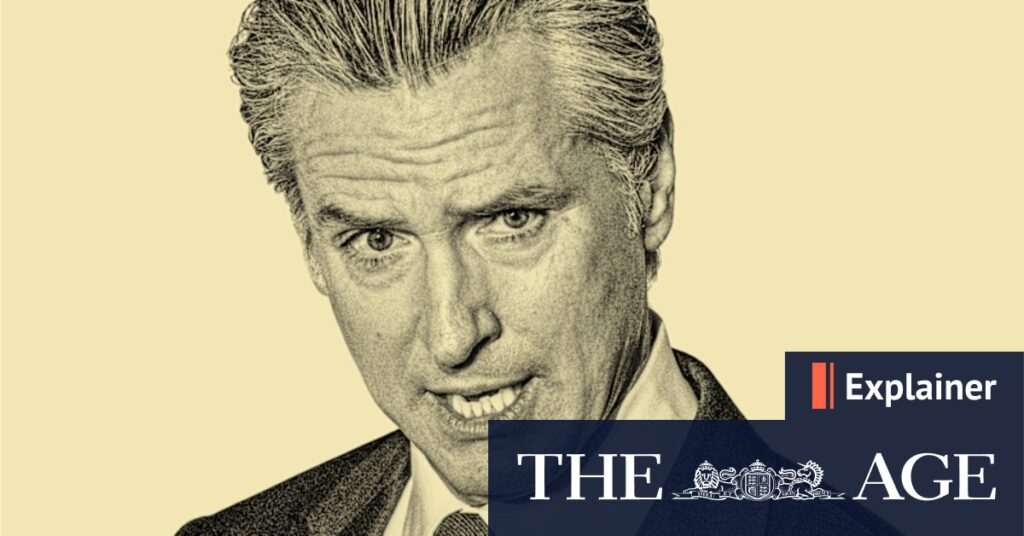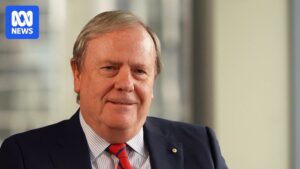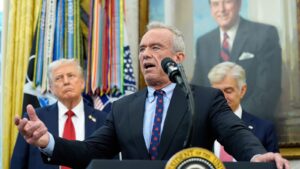
In 2007, Gavin Newsom’s rapid political ascent encountered its first significant hurdle. Amidst a high-profile divorce from his first wife, Kimberly Guilfoyle, a television presenter and lawyer, Newsom faced a scandal involving a brief affair with his appointments secretary, who was married to his then-campaign manager. The revelation became a national sensation, yet Newsom’s career endured after a candid press conference where he took full responsibility, stating,
“I want to make it clear that everything you’ve heard and read is true.”
Newsom remarried in 2008 to Jennifer Siebel, an actress and film director, with whom he has four children. Meanwhile, Guilfoyle later dated Donald Trump Jr., illustrating the small world of political and media circles. Newsom’s political ambitions continued to grow, and after considering a gubernatorial run in 2009, he instead served as lieutenant governor under Jerry Brown, achieving minor progressive victories such as tightening gun controls and legalizing marijuana.
Newsom’s Rise to Governor
In 2018, as Jerry Brown’s tenure concluded, Newsom ran for governor of California and won by a landslide. His campaign was bolstered by substantial donations from influential San Francisco families like the Pritzkers, Fishers, and Gettys. The Los Angeles Times described him as
“the product of a selection process in which some of the wealthiest families in the entire country have been involved from his earliest engagement in politics.”
As governor, Newsom has enacted numerous progressive policies, including banning smoking in state parks and beaches, requiring public colleges to offer abortion medications, and mandating gender-neutral toy sections in large retailers. Recently, he banned the sale of Glock pistols and facilitated easier access to higher education for high-school students. However, he has faced criticism over California’s homelessness crisis, soaring housing costs, and a sharp cost-of-living increase. A notable misstep occurred in 2020 when he dined mask-free at the French Laundry, a high-end restaurant, during COVID-19 restrictions, fueling a recall campaign he ultimately survived.
Potential Presidential Ambitions
Speculation about Newsom’s presidential ambitions has intensified, particularly due to his confrontations with former President Donald Trump. Initially, Newsom sought to mediate between political factions, even welcoming Trump to California in 2018 after devastating wildfires. However, relations soured in June when Trump deployed the National Guard to Los Angeles to crack down on undocumented immigrants, leading to a public feud. Newsom defiantly responded to threats of arrest by saying,
“Come after me. Arrest me. Let’s just get it over with, tough guy.”
This conflict has elevated Newsom’s national profile, positioning him as a leading figure in the Democratic resistance against Trump. According to Dafydd Townley from the University of Portsmouth,
“Democrats are unable to have any impact in Congress. Any resistance comes from the states themselves, and Newsom has assumed that leadership.”
Challenges and Opportunities
Newsom’s term as governor ends in 2027, potentially paving the way for a presidential campaign. However, he faces challenges, including maintaining media attention and addressing criticisms from both within and outside his party. Tim Lynch, a professor of American politics, describes him as a
“target-rich environment,”
noting his links to affluent families and his status as a white, straight male in a party seeking diversity.
Despite these hurdles, Newsom’s potential rivals lack his name recognition. Possible contenders include Alexandria Ocasio-Cortez, Pete Buttigieg, and Kamala Harris, who has not ruled out another presidential bid. Meanwhile, Michelle Obama remains a speculative candidate. Natasha Lindstaedt, a professor of government, comments,
“I do think he is going to try to run, and has been positioning himself as the person that is best to beat Trump.”
Strategic Moves and Future Prospects
Newsom’s immediate focus includes a California ballot initiative, Proposition 50, aimed at redrawing congressional districts to favor Democrats, countering Republican efforts in states like Texas. Success could significantly boost his political standing. Bruce Wolpe suggests,
“If he wins that and California enacts it, that would be a big win for him. He becomes the giant-killer for the Democratic Party.”
Failure, however, could undermine his presidential aspirations. As Wolpe notes,
“He’s a popular governor. If he can’t persuade his own state to support him on something so important, like the future of the country, why should he be the presidential nominee?”
As Gavin Newsom navigates these challenges and opportunities, his political journey remains a compelling narrative of ambition, controversy, and potential national leadership.





